In the dynamic world of liquid logistics, ensuring the safe and compliant transport of various liquids is of paramount importance. The cornerstone of this safety is a set of stringent regulations and certifications that isotanks must adhere to. In this article, we’ll take a closer look at the fascinating world of isotank regulations and certifications, shedding light on the pivotal role they play in the liquid logistics industry.
Understanding the Basics
To keep the world of isotank transportation in check, a series of regulatory requirements and certifications have been established. These are not just bureaucratic obstacles but essential safeguards to protect the environment, cargo, and the people involved in the logistics chain.
Key Regulations and Influential Organizations
Several international organizations and authorities set the law when it comes to isotank transportation. Foremost among them is the United Nations, which develops a framework of regulations governing the classification, packaging, labeling, and transportation of hazardous goods. The United Nations Globally Harmonized System (GHS) provides a standardized approach to classifying and labeling chemicals to communicate their risks.
In addition to the United Nations, the International Maritime Organization (IMO) sets safety and environmental rules for international shipping. The IMO’s International Maritime Dangerous Goods (IMDG) Code specifies technical standards to be followed in the transport of various dangerous goods, including those carried in isotanks.
The International Tank Container Organization (ITCO) is another influential player in the isotank industry. It provides guidance and standards for tank containers, promoting safety and quality.
In Europe, the European Federation of Tank Cleaning Organizations (EFTCO) plays a crucial role in dictating guidelines for tank container cleaning processes. This ensures that isotanks remain in pristine condition between uses.
For the chemical industry, the European Chemical Industry Council (CEFIC) sets safety standards and guidelines. Their involvement in the isotank sector ensures the safe transport of various chemical products.
Significant Certifications
Certifications are the bedrock of isotank quality and safety. ISO certification is one of the most sought-after, ensuring that tanks meet specific quality and safety standards. ISO containers undergo rigorous testing and inspections to earn this prestigious certification.
ADR certification, issued by the United Nations Economic Commission for Europe (UNECE), is required for the transport of hazardous goods within Europe. It covers everything from the design and construction of isotanks to their testing and inspection.
Third-Party Verification
In the construction of isotanks, third-party verification is essential. These agreements, such as ADR/RID, IMDG, CSC, US-DOT, TIR, UIC, and TC, are vital in ensuring the safety of isotanks during transport.
Why It Matters
In a world where safe liquid transportation is non-negotiable, these regulations and certifications are the unsung heroes. They ensure that the orange juice you enjoy at breakfast, the chemicals used in manufacturing, and even the fuel that powers your car have been transported in isotanks that meet the highest safety standards.
Choosing the right isotank and understanding its compliance with regulations and certifications is a responsibility that should not be taken lightly. It ensures that your liquid cargo reaches its destination safely, with no harm to people, property, or the environment.
Navigating the sea of isotank regulations and certifications may seem overwhelming, but you don’t have to do it alone. TankWiser is your trusted partner on this journey. Our team of experts is well-versed in the world of isotank logistics and can provide the guidance you need.
Curious to learn more about isotank regulations and certifications? Looking for a reliable partner to ensure the safety and compliance of your liquid cargo? Contact TankWiser today, and let’s explore the world of liquid logistics together.



